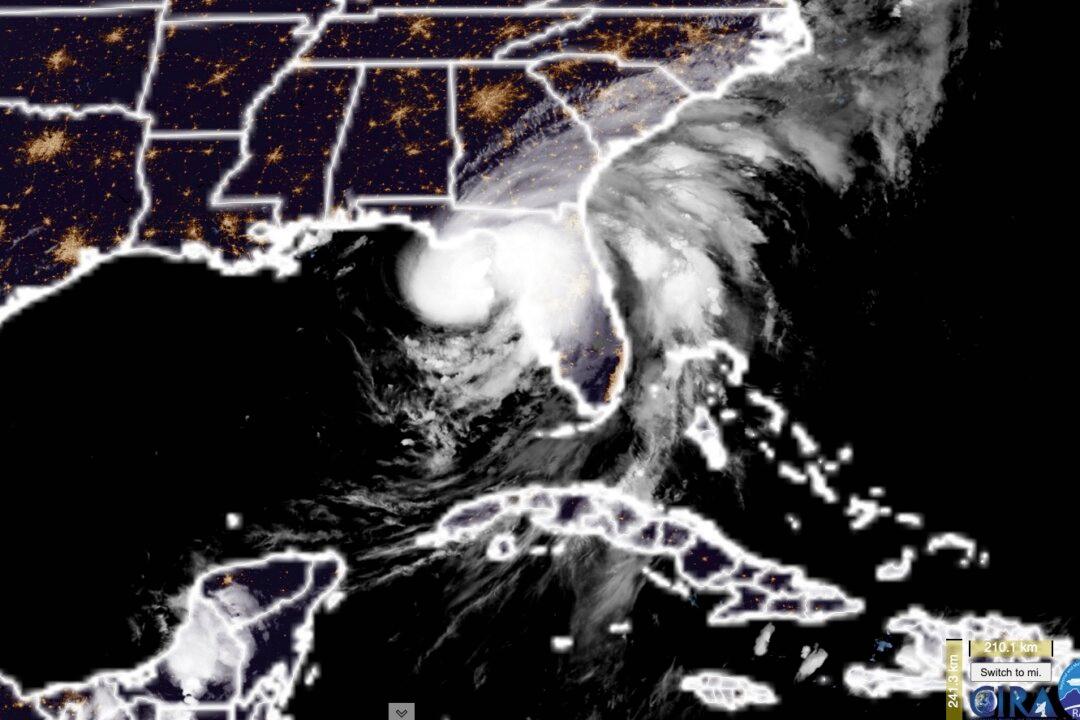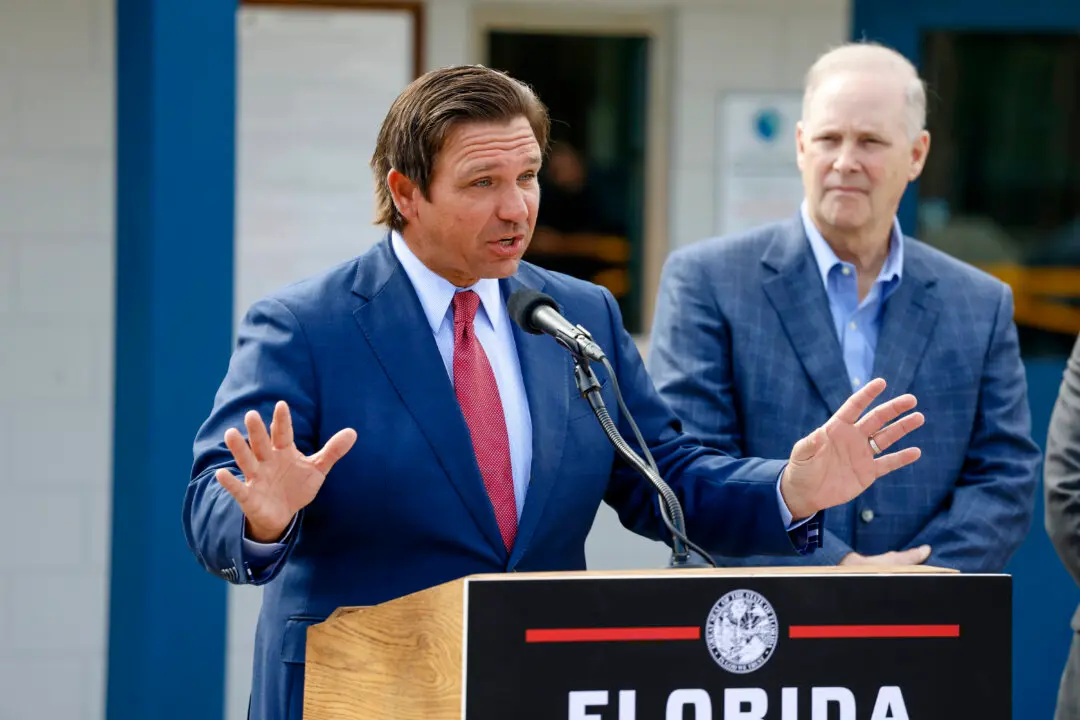TAMPA, Fla.—Tropical Storm Debby has been upgraded to a Category 1 strength hurricane as it nears landfall along the northeastern Gulf coast, according to the 11 p.m. update from the National Hurricane Center (NHC).
The upgrade was made as maximum sustained winds exceeded 74 mph.





